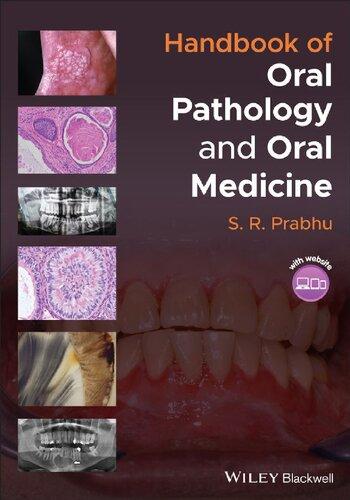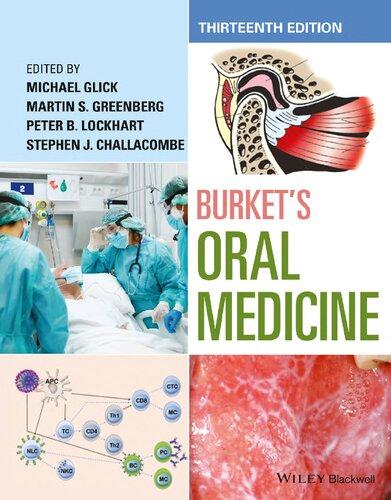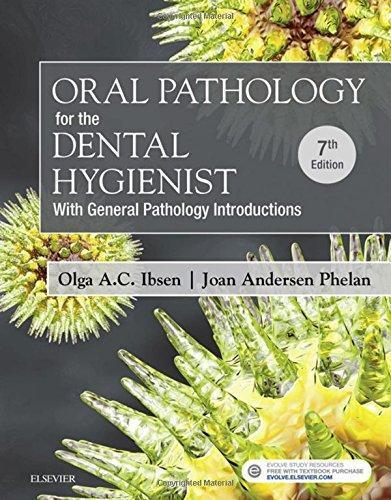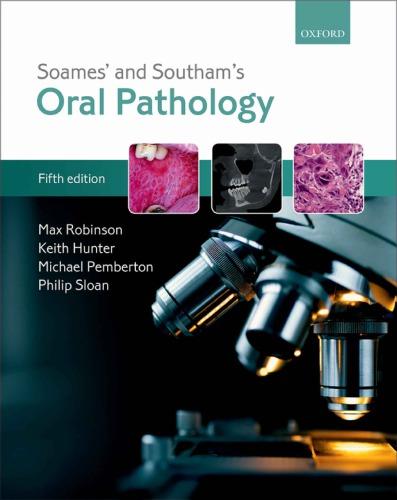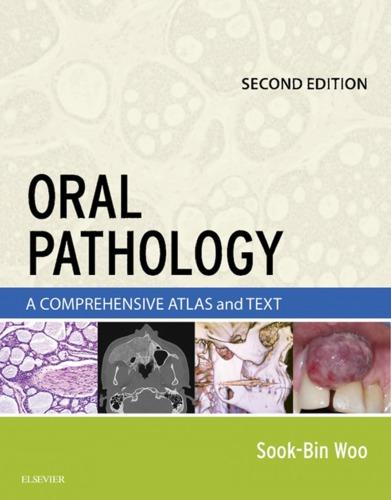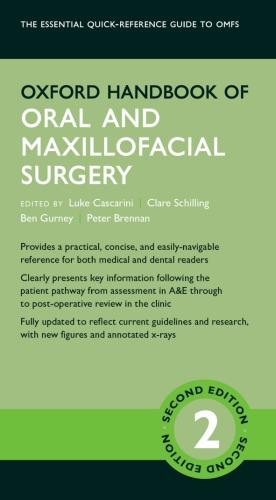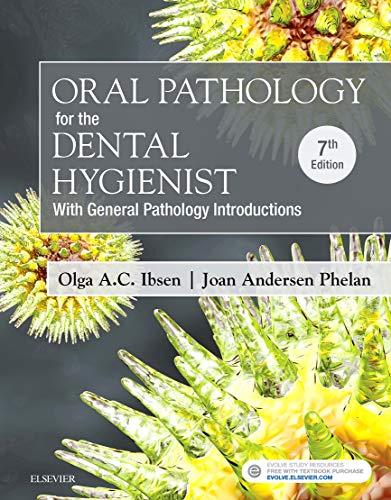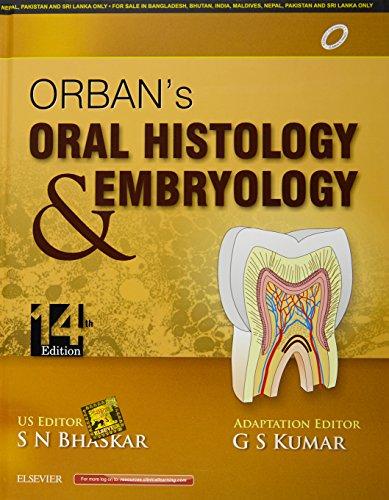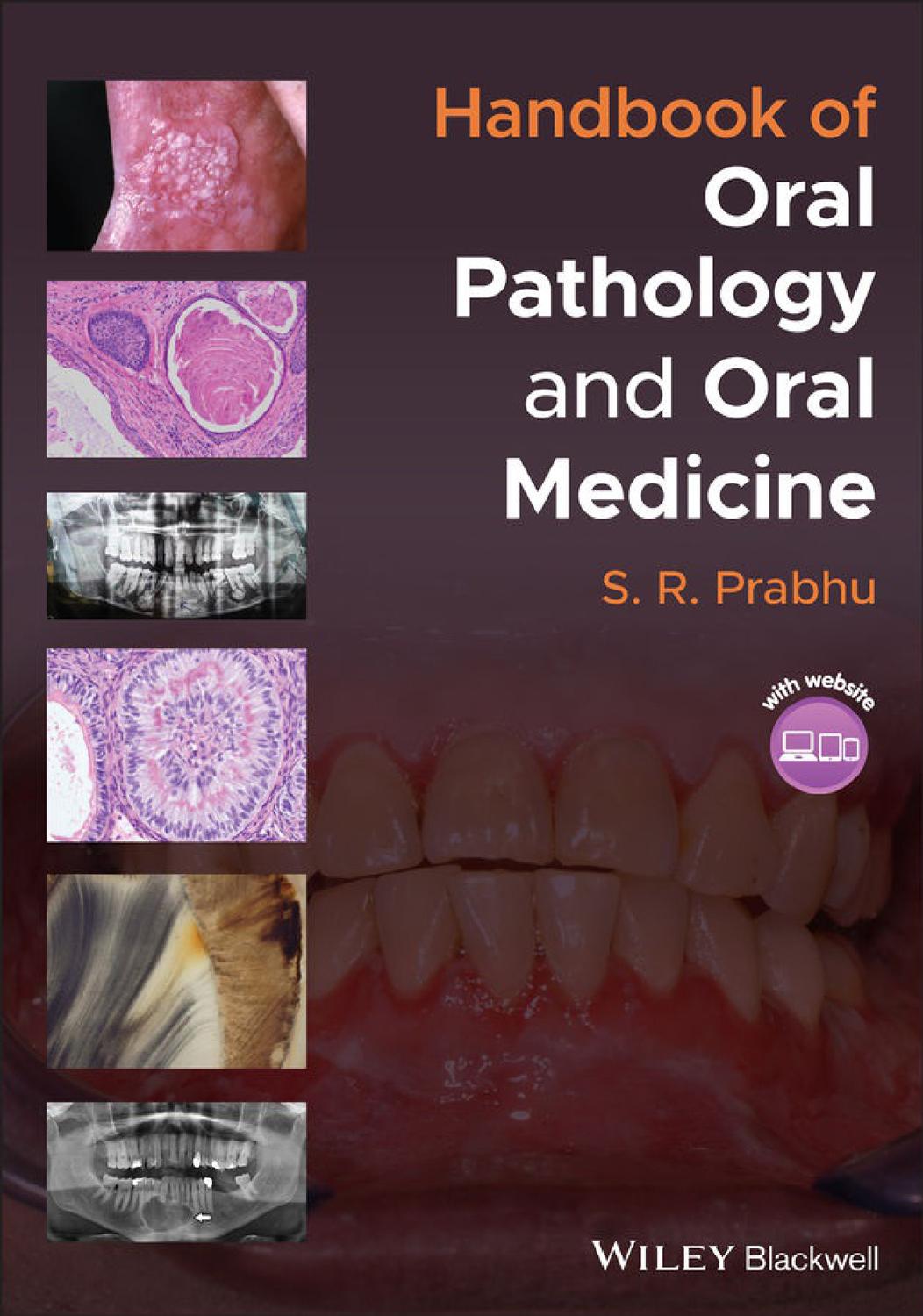Handbook of Oral Pathology and Oral Medicine
S. R. Prabhu BDS; MDS (Oral Path); FFDRCS (Oral Med); FDSRCS(Edin); FDSRCPS (Glas); FDSRCS (Eng), FFGDPRCS(UK); MOMed RCS (Edin); FICD.
Honorary Associate Professor School of Dentistry University of Queensland Brisbane, Australia
This edition first published 2022 © 2022 John Wiley & Sons Ltd
All rights reserved. No part of this publication may be reproduced, stored in a retrieval system, or transmitted, in any form or by any means, electronic, mechanical, photocopying, recording or otherwise, except as permitted by law. Advice on how to obtain permission to reuse material from this title is available at http://www.wiley.com/go/permissions.
The right of S. R. Prabhu to be identified as the author of this work has been asserted in accordance with law.
Registered Offices
John Wiley & Sons, Inc., 111 River Street, Hoboken, NJ 07030, USA
John Wiley & Sons Ltd, The Atrium, Southern Gate, Chichester, West Sussex, PO19 8SQ, UK
Editorial Office
9600 Garsington Road, Oxford, OX4 2DQ, UK
For details of our global editorial offices, customer services, and more information about Wiley products visit us at www.wiley.com.
Wiley also publishes its books in a variety of electronic formats and by print-on-demand. Some content that appears in standard print versions of this book may not be available in other formats.
Limit of Liability/Disclaimer of Warranty
The contents of this work are intended to further general scientific research, understanding, and discussion only and are not intended and should not be relied upon as recommending or promoting scientific method, diagnosis, or treatment by physicians for any particular patient. In view of ongoing research, equipment modifications, changes in governmental regulations, and the constant flow of information relating to the use of medicines, equipment, and devices, the reader is urged to review and evaluate the information provided in the package insert or instructions for each medicine, equipment, or device for, among other things, any changes in the instructions or indication of usage and for added warnings and precautions. While the publisher and authors have used their best efforts in preparing this work, they make no representations or warranties with respect to the accuracy or completeness of the contents of this work and specifically disclaim all warranties, including without limitation any implied warranties of merchantability or fitness for a particular purpose. No warranty may be created or extended by sales representatives, written sales materials or promotional statements for this work. The fact that an organization, website, or product is referred to in this work as a citation and/or potential source of further information does not mean that the publisher and authors endorse the information or services the organization, website, or product may provide or recommendations it may make. This work is sold with the understanding that the publisher is not engaged in rendering professional services. The advice and strategies contained herein may not be suitable for your situation. You should consult with a specialist where appropriate. Further, readers should be aware that websites listed in this work may have changed or disappeared between when this work was written and when it is read. Neither the publisher nor authors shall be liable for any loss of profit or any other commercial damages, including but not limited to special, incidental, consequential, or other damages.
Library of Congress Cataloging-in-Publication Data applied for [ISBN: 9781119781127]
Cover Design: Wiley
Cover Images: Courtesy of S. R. Prabhu Set in 9.5/12.5pt STIXTwoText by Straive, Pondicherry, India
To the victims of COVID-19 infection and all those frontline healthcare workers who are engaged in the fight against the disease with utmost courage and dedication.
Contents
Foreword xvii
Preface xix
Acknowledgements xxi
About the Companion Website xxiii
Nomenclature U sed in The S tudy of Human Disease xxv
Standard A bbreviations for Prescribers xxviii
Part I Pathology of Teeth and Supporting Structures 1
1 Disorders of Tooth Development and Eruption 3
1.1 Anodontia, Hypodontia and Oligodontia 3
1.2 Hyperdontia (Supernumerary Teeth) 5
1.3 Microdontia and Macrodontia 6
1.4 Gemination, Fusion and Concrescence 7
1.5 Taurodontism and Dilaceration 9
1.6 Amelogenesis Imperfecta 11
1.7 Dentinogenesis Imperfecta 13
1.8 Dentinal Dysplasia (Dentin Dysplasia) 14
1.9 Regional Odontodysplasia (Ghost Teeth) 16
1.10 Delayed Tooth Eruption 17
1.11 Tooth Impaction (Impacted Teeth) 18
1.12 Dens Invaginatus and Dens Evaginatus 20
1.13 Fluorosis (Mottled Enamel) 22
1.14 Tetracycline-Induced Discoloration of Teeth: Key Features 24
1.15 Enamel Pearl: Key Features 24
1.16 Talon Cusp: Key Features 25
1.17 Hutchinson’s Incisors and Mulberry Molars: Key Features 26
1.18 Tooth Ankylosis: Key Features 26
1.19 Supernumerary Roots: Key Features 27
2 Dental caries 29
2.1 Definition/Description 29
2.2 Frequency 29
2.3 Aetiology/Risk Factors/Pathogenesis 29
2.4 Classification of Caries 30
2.5 Clinical Features 30
2.6 Differential Diagnosis 33
2.7 Diagnosis 33
2.8 Microsopic Features 33
2.9 Management 35
2.10 Prevention 36
3 Diseases of the Pulp and Apical Periodontal Tissues 37
3.1 Classification of Diseases of the Pulp and Apical Periodontal Tissues 37
3.2 Pulpitis 38
3.3 Apical Periodontitis and Periapical Granuloma 40
3.4 Apical Abscess (Dentoalveolar Abscess) 43
3.5 Condensing Osteitis 44
4 Tooth Wear, Pathological Resorption of Teeth, Hypercementosis and Cracked Tooth Syndrome 47
4.1 Tooth wear: Attrition, Abrasion, Erosion, and Abfraction 47
4.2 Pathological Resorption of Teeth 50
4.3 Hypercementosis 52
4.4 Cracked Tooth Syndrome 53
5 Gingival and Periodontal Diseases 57
5.1 Classification of Gingival and Periodontal Diseases 58
5.2 Chronic Gingivitis 58
5.3 Necrotizing Periodontal Diseases 60
5.4 Plasma Cell Gingivitis 63
5.5 Foreign Body Gingivitis 64
5.6 Desquamative Gingivitis 65
5.7 Chronic Periodontitis 67
5.8 Aggressive Periodontitis 70
5.9 Fibrous Epulis (Peripheral Fibroma) 73
5.10 Peripheral Ossifying/Cementifying Fibroma 74
5.11 Peripheral Giant Cell Granuloma (Giant Cell Epulis) 76
5.12 Angiogranuloma (Pyogenic granuloma/pregnancy epulis) 77
5.13 Inflammatory Gingival Hyperplasia (Inflammatory Gingival Enlargement) 79
5.14 Generalized Gingival Hyperplasia in Pregnancy 81
5.15 Drug-Induced Gingival Hyperplasia 82
5.16 Familial Gingival Hyperplasia 84
5.17 Gingival and Periodontal Abscesses 86
5.18 Pericoronitis/Pericoronal Abscess 89
5.19 Gingival Enlargement in Granulomatosis with Polyangiitis (Wegener’s granulomatosis) 91
5.20 Gingival Enlargement in Leukaemia 93
5.21 Gingival Enlargement in Ascorbic Acid Deficiency 95
Part II Pathology of Jaw Bones 99
6 Infections and Necrosis of the Jaw 101
6.1 Acute Suppurative Osteomyelitis 101
6.2 Chronic Suppurative Osteomyelitis 104
6.3 Sclerosing Osteomyelitis 106
6.4 Proliferative Periostitis (Garre’s Osteomyelitis) 108
6.5 Actinomycosis of the Jaw 109
6.6 Cervicofacial Cellulitis (Cervicofacial Fascial Space Infection) 111
6.7 Osteoradionecrosis of the Jaw 112
6.8 Medication-Related Osteonecrosis of the Jaw 114
7 Cysts of the Jaw 117
7.1 Radicular, Lateral Radicular, and Residual Radicular Cysts 117
7.2 Dentigerous Cyst 120
7.3 Eruption Cyst 122
7.4 Odontogenic Keratocyst (Keratocystic Odontogenic Tumour) 123
7.5 Lateral Periodontal Cyst 126
7.6 Calcifying Odontogenic Cyst 127
7.7 Orthokeratinized Odontogenic Cyst: Key Features 130
7.8 Glandular Odontogenic Cyst: Key Features 130
7.9 Nasopalatine Duct Cyst (Incisive Canal Cyst) 130
7.10 Pseudocysts of the Jaw: Solitary Bone Cyst, Aneurysmal Bone Cyst and Stafne’s bone Cyst 132
7.11 Nasolabial Cyst: Key Features 135
8 Odontogenic Tumours 137
8.1 World Health Organization Classification of Odontogenic Tumours (2017) 137
8.2 Ameloblastoma 138
8.3 Unicystic Ameloblastoma 141
8.4 Squamous Odontogenic Tumour 144
8.5 Calcifying Epithelial Odontogenic Tumour (Pindborg Tumour) 145
8.6 Adenomatoid Odontogenic Tumour 147
8.7 Ameloblastic Fibroma 149
8.8 Ameloblastic Fibrodentinoma and Ameloblastic Fibro- Odontome 151
8.9 Odontome (Odontoma) 153
8.10 Dentinogenic Ghost Cell Tumour 155
8.11 Odontogenic Myxoma 157
8.12 Odontogenic Fibroma (Central Odontogenic Fibroma) 159
8.13 Cementoblastoma 161
9 Non-odontogenic Benign and Malignant Tumours of the Jaw 165
9.1 Osteoma 165
9.2 Multiple Osteomas in Gardner’s Syndrome 167
9.3 Central Haemangioma (Intraosseous Haemangioma) 169
9.4 Melanotic Neuroectodermal Tumour of Infancy 171
9.5 Osteosarcoma 172
9.6 Chondrosarcoma: Key Features 174
9.7 Ewing’s Sarcoma 175
9.8 Myeloma (Multiple Myeloma) 177
9.9 Solitary Plasmacytoma 179
9.10 Burkitt’s Lymphoma 181
10 Fibro-Osseous and Related Lesions of the Jaw 185
10.1 Ossifying Fibroma/Cemento- Ossifying Fibroma 185
10.2 Cemento- Osseous Dysplasias 187
10.3 Familial Gigantiform Cementoma: Key Features 190
10.4 Central Giant Cell Granuloma 191
11 Genetic, Metabolic, and Other Non-neoplastic Bone Diseases 195
11.1 Osteogenesis Imperfecta 195
11.2 Cleidocranial Dysplasia 197
11.3 Cherubism 199
11.4 Gigantism and Acromegaly 201
11.5 Brown Tumour of Hyperparathyroidism 203
11.6 Paget’s Disease of Bone (Osteitis Deformans) 205
11.7 Fibrous Dysplasia and McCune–Albright Syndrome 207
11.8 Mandibular and Palatine Tori: Key Features 210
11.9 Focal Osteoporotic Bone Marrow Defect: Key Features 210
Part III Pathology of the Oral Mucosa 213
12 Developmental Anomalies and Anatomical Variants of Oral Soft Tissues 215
12.1 Fordyce Granules: Key Features 215
12.2 Double Lip: Key Features 215
12.3 Leukoedema: Key Features 216
12.4 Ankyloglossia: Key Features 216
12.5 Geographic Tongue: Key Features 217
12.6 Hairy Tongue: Key Features 218
12.7 Fissured Tongue: Key Features 218
12.8 Lingual Thyroid: Key Features 218
12.9 Microglossia and Macroglossia: Key Features 219
12.10 Bifid Tongue: Key Features 220
12.11 Bifid Uvula: Key Features 220
12.12 Cleft Lip: Key Features 221
12.13 Calibre Persistent Labial Artery: Key Features 221
12.14 Epstein’s Pearl and Bohn’s Nodules: Key Features 223
12.15 Dermoid and Epidermoid Cysts: Key Features 223
12.16 Oral Varicosities: Key Features 224
12.17 Lymphoid Aggregates: Key Features 224
12.18 Parotid Papilla: Key Features 225
12.19 Circumvallate Papillae: Key Features 226
12.20 Physiological Pigmentation: Key Features 226
13 Bacterial Infections of the Oral Mucosa 229
13.1 Scarlet Fever: Key Features 229
13.2 Syphilis 229
13.3 Gonorrhoea: Key Features 232
13.4 Tuberculosis 233
14 Fungal Infections of the Oral Mucosa 237
14.1 Candidosis (Candidiasis) 237
14.2 Histoplasmosis 244
14.3 Blastomycosis: Key Features 246
15 Viral Infections of the Oral Mucosa 247
15.1 Primary Herpetic Gingivostomatitis (Primary Herpes) 247
15.2 Herpes Labialis 250
15.3 Varicella (Chickenpox) 252
15.4 Herpes Zoster (Shingles) 253
15.5 Infectious Mononucleosis (Glandular Fever) 255
15.6 Oral Hairy Leukoplakia: Key Features 257
15.7 Cytomegalovirus Infection: Key Features 258
15.8 Herpangina: Key Features 258
15.9 Hand, Foot, and Mouth Disease 258
15.10 Squamous Papilloma 260
15.11 Condyloma Acuminatum: Key Features 261
15.12 Multifocal Epithelial Hyperplasia: Key Features 262
15.13 Verruca Vulgaris: Key Features 262
15.14 Measles: Key Features 263
16 Non-infective Inflammatory Disorders of the Oral Mucosa 265
16.1 Recurrent Aphthous Stomatitis 265
16.2 Oral Lichen Planus 269
16.3 Oral Lichenoid Lesions 272
16.4 Pemphigus Vulgaris 273
16.5 Mucous Membrane Pemphigoid 276
16.6 Erythema Multiforme 279
16.7 Lupus Erythematosus: Key Features 281
16.8 Traumatic Ulcer: Key Features 281
16.9 Oral Lesions in Behcet’s Disease/Syndrome 282
16.10 Oral Lesions in Crohn’s Disease 283
16.11 Oral Lesions in Reactive Arthritis: Key Features 285
16.12 Uremic Stomatitis: Key Features 285
16.13 Chronic Ulcerative Stomatitis: Key Features 285
16.14 Radiation-Induced Mucositis: Key Features 286
16.15 Medication-Induced Oral Ulceration: Key Features 287
16.16 Stevens–Johnson Syndrome and Toxic Epidermal Necrolysis 287
17 Non-neoplastic Mucosal Swellings 291
17.1 Irritation Fibroma (Traumatic Fibroma) 291
17.2 Denture-Induced Granuloma (Epulis Fissuratum) 293
17.3 Fibrous Epulis (Peripheral Fibroma): key features 294
17.4 Pyogenic Granuloma: key features 295
17.5 Peripheral Giant Cell Granuloma: key features 295
17.6 Peripheral Ossifying Fibroma: key features 295
17.7 Traumatic Neuroma 295
17.8 Squamous Papilloma: Key Features 296
17.9 Congenital Epulis: Key Features 297
18 Benign Neoplasms of the Oral Mucosa 299
18.1 Lipoma 299
18.2 Schwannoma (Neurilemmoma) 301
18.3 Granular Cell Tumour 302
18.4 Haemangioma 304
18.5 Lymphangioma 306
18.6 Leiomyoma (Vascular Leiomyomas): Key Features 307
18.7 Rhabdomyoma: Key Features 307
19 Oral Potentially Malignant Disorders 309
19.1 Erythroplakia 309
19.2 Leukoplakia 311
19.3 Chronic Hyperplastic Candidosis (Candidal Leukoplakia) 315
19.4 Palatal Lesions in Reverse Smokers 317
19.5 Oral Lichen Planus: Key Features 319
19.6 Oral Submucous Fibrosis 320
19.7 Oral Lichenoid Lesion 322
19.8 Lupus Erythematosus 324
19.9 Actinic Keratosis of the Lip (Actinic Cheilitis) 326
19.10 Graft-Versus-Host Disease 328
19.11 Dyskeratosis Congenita 330
19.12 Sublingual Keratosis: Key Features 331
19.13 Syphilitic Leukoplakia: Key Features 332
19.14 Darier’s Disease: Key Features 332
20 Malignant Neoplasms of the Oral Mucosa 335
20.1 Squamous Cell Carcinoma and Verrucous Carcinoma 335
20.2 Melanoma (Malignant Melanoma) 340
20.3 Kaposi’s Sarcoma 342
20.4 Fibrosarcoma: Key Features 343
20.5 Rhabdomyosarcoma: Key Features 344
20.6 Leiomyosarcoma: Key Features 344
Par t IV Pathology of the Salivary Glands 347
21 Non-neoplastic Salivary Gland Diseases 349
21.1 Salivary Calculi: Key Features 349
21.2 Mucoceles (Mucous Extravasation Cysts, Mucous Retention Cysts and Ranula) 350
21.3 Sjögren’s Syndrome 352
21.4 Sialadenitis: Key Features 354
21.5 Necrotizing Sialometaplasia: Key Features 355
22 Salivary Gland Neoplasms 357
22.1 World Health Organization Histological Classification of Salivary Gland tumours (2017) 357
22.2 Pleomorphic Adenoma 358
22.3 Warthin’s Tumour (Papillary Cystadenoma Lymphomatosum) 360
22.4 Mucoepidermoid Carcinoma 362
22.5 Adenoid Cystic Carcinoma 364
t V Clinical Presentation of Mucosal Disease 367
23 White Lesions of the Oral Mucosa 369
23.1 Actinic Cheilitis: Key Features 369
23.2 Chemical Burn: Key Features 370
23.3 Chronic Hyperplastic Candidosis: Key Features 370
23.4 Darier’s Disease: Key Features 371
23.5 Dyskeratosis Congenita: Key Features 371
23.6 Fordyce granules: Key Features 372
23.7 Frictional Keratosis: Key Features 372
23.8 Hereditary Benign Intraepithelial Dyskeratosis: Key Features 373
23.9 Leukoedema: Key Features 373
23.10 Leukoplakia: Key Features 373
23.11 Oral Hairy Leukoplakia: Key Features 374
23.12 Oral Lichen Planus: Key Features 374
23.13 Oral Squamous Cell Carcinoma: Key Features 375
23.14 Pseudomembranous Candidosis: Key Features 375
23.15 Smokeless Tobacco-Induced Keratosis: Key Features 376
23.16 Smoker’s Keratosis: Key Features 376
23.17 Sublingual Keratosis: Key Features 377
23.18 Syphilitic Leukoplakia: Key Features 377
23.19 Verrucous Carcinoma: Key Features 377
23.20 White Hairy Tongue: Key Features 378
23.21 White Sponge Nevus: Key Features 378
24 Red and Purple Lesions of the Oral Mucosa 381
24.1 Contact Stomatitis: Key Features 381
24.2 Desquamative Gingivitis: Key Features 382
24.3 Erythema Migrans: key features 382
24.4 Erythema Multiforme: Key Features 382
24.5 Erythematous Candidosis: Key Features 383
24.6 Erythroplakia: Key Features 383
24.7 Haemangioma: Key Features 384
24.8 Hereditary Haemorrhagic Telangiectasia: Key Features 384
24.9 Infectious Mononucleosis: Key Features 385
24.10 Kaposi’s Sarcoma: Key Features 385
24.11 Linear Gingival Erythema: Key Features 385
24.12 Lupus Erythematosus: Key Features 386
24.13 Median Rhomboid Glossitis: Key Features 386
24.14 Mucosal Ecchymosis, Haematoma, and Petechiae: Key Features 386
24.15 Plasma Cell Gingivitis: Key Features 387
24.16 Port-Wine Nevus: Key Features 387
24.17 Radiation Mucositis: Key Features 387
24.18 Thermal Burn: Key Features 388
25 Blue, Black, and Brown Lesions of the Oral Mucosa 389
25.1 Addison’s Disease: Key Features 389
25.2 Amalgam Tattoo: Key Features 389
25.3 Black/Brown Hairy Tongue: Key Features 390
25.4 Drug-Induced Pigmentation: Key Features 391
25.5 Heavy Metal Pigmentation: Key Features 392
25.6 Laugier–Hunziker Syndrome: Key Features 392
25.7 Melanoma: Key Features 393
25.8 Melanotic Macule: Key Features 393
25.9 Peutz–Jeghers Syndrome: Key Features 393
25.10 Physiological Pigmentation: Key Features 394
25.11 Mucosal Nevi: Key Features 394
25.12 Smoker’s Melanosis: Key Features 395
26 Vesiculobullous Lesions of the Oral Mucosa 397
26.1 Angina Bullosa Haemorrhagica: Key Features 397
26.2 Bullous Lichen Planus: Key Features 397
26.3 Dermatitis Herpetiformis: Key Features 398
26.4 Erythema Multiforme: Key Features 398
26.5 Hand, Foot and Mouth Disease: Key Features 398
26.6 Herpes Zoster (Shingles): Key Features 399
26.7 Mucous Membrane Pemphigoid: Key Features 399
26.8 Pemphigus Vulgaris: Key Features 400
26.9 Primary Herpetic Gingivostomatitis: Key Features 400
26.10 Herpes Labialis: Key Features 400
27 Ulcerative Lesions of the Oral Mucosa 403
27.1 Oral Ulcers in Agranulocytosis: Key Features 403
27.2 Oral Ulcers in Behçet’s Disease: Key Features 404
27.3 Oral Ulcers in Coeliac Disease: Key Features 404
27.4 Chronic Ulcerative Stomatitis: Key Features 405
27.5 Oral Ulcers in Crohn’s Disease: Key Features 405
27.6 Oral Ulcers in Cyclic Neutropenia: Key Features 406
27.7 Cytomegalovirus Ulcers: Key Features 406
27.8 Eosinophilic Ulcer: Key Features 406
27.9 Gangrenous Stomatitis: Key Features 406
27.10 Necrotizing Sialometaplasia: Key Features 407
27.11 Necrotizing Ulcerative Gingivitis: Key Features 407
27.12 Oral Ulcers in Reactive Arthritis: Key Features 408
27.13 Recurrent Aphthous Ulcers: Key Features 408
27.14 Squamous Cell Carcinoma Presenting as an Ulcer: Key Features 409
27.15 Syphilitic Ulcers: Key Features 409
27.16 Traumatic Ulcer: Key Features 410
27.17 Tuberculous Ulcer: Key Features 410
27.18 Oral Ulcer in Ulcerative Colitis: Key Features 411
28 Papillary Lesions of the Oral Mucosa 413
28.1 Condyloma Acuminatum: Key Features 413
28.2 Multifocal Epithelial Hyperplasia (Heck’s Disease): Key Features 413
28.3 Oral Proliferative Verrucous Leukoplakia: Key Features 414
28.4 Squamous Papilloma: Key Features 414
28.5 Squamous Cell Carcinoma: Key Features 414
28.6 Verruca Vulgaris (Oral Warts): Key Features 414
28.7 Verrucous Carcinoma: Key Features 415
Par t VI Orofacial Pain 417
29 Orofacial Pain 419
29.1 Odontogenic Orofacial Pain 419
29.2 Neuropathic Orofacial Pain 421
29.3 Other Conditions with Orofacial Pain 423
Par t VII Miscellaneous Topics of Clinical Relevance 427
30 Oral Manifestations of Systemic Disorders 429
30.1 Gastrointestinal and Liver Disorders 429
30.2 Cardiovascular Disease 431
30.3 Respiratory Disease 431
30.4 Kidney Diseases 432
30.5 Endocrine and Metabolic Disorders 434
30.6 Nervous System Disorders 435
30.7 Haematological Disorders 437
30.8 Immune System Disorders 439
31 Systemic Diseases Associated with Periodontal Infections 441
31.1 Cardiovascular Disease 441
31.2 Coronary Heart Disease (Atherosclerosis and Myocardial Infarction) 441
31.3 Stroke 442
31.4 Infective Endocarditis 442
31.5 Bacterial Pneumonia 442
31.6 Low Birth Weight 443
31.7 Diabetes Mellitus 443
32 Other Signs and Symptoms Related to the Oral Environment 445
32.1 Halitosis 445
32.2 Taste Disorders 446
32.3 Dry Mouth (Xerostomia) 447
32.4 Sialorrhea 448
32.5 Trismus 449
32.6 COVID-19 Infection 449
33 Outline of Diagnostic Steps and Procedures Employed in Oral Pathology and Oral Medicine 453
33.1 History 453
33.2 Clinical Examination 454
33.3 Clinical Differential Diagnosis 455
33.4 Diagnosis 456
Index 459
Foreword
This is an amazing work. Professor SR Prabhu has touched constructively on almost every “issue”, every decision required, in the day-to-day practice of oral medicine and to a considerable extent, oral/maxillofacial pathology. He has laid out the material in a very logical set of chapters. The extensive illustrations are of uniformly high quality: many of these have been donated by colleagues around the world and I join in thanking them for their generosity: many have become personal friends to us both.
I initially was hesitant to contribute this Foreword. As a quantitative scientist, I always wish to see the evidence base for every diagnosis, test and treatment presented. This is deliberately not the intention here - indeed it is the opposite of Prof Prabhu’s intent. As he put it in response to my challenge “My intention is not to compete with great authors of international repute. The material presented is truly a compilation of what is known in the scientific papers, books and case reports that are (I might interpolate with much hard work) available. This is a humble attempt to provide students and busy practitioners with a source that provides quick access to information”. I see the value of this: indeed, I wish my current undergraduate and postgraduate students came to clinics with a copy in their pockets!
Professor SR Prabhu is a remarkable professional in the autumn of a remarkable career. This has impacted the dental profession, and particularly dental students, across the globe, for decades, beginning with his first teaching appointment in India in 1971. We first met when he was Commonwealth Medical Scholar in my department in London in 1974. Chronologically since then he has taught and led teaching [including from positions as Head of Department or Dean in several institutions] in universities in India, Kenya, Sudan, Australia, Papua New Guinea, West Indies, Malaysia, Saudi Arabia, West Indies (again), United Arab Emirates, and several Australian universities, again. His vast knowledge reflects this.
I have learned much from his global experience and it was particularly educative for me to work with him, as co-editor and co-author of his largest work Oral Diseases in the Tropics (Oxford University Press 1992; Revised reprint, Jaypee Bros. 2017). Beyond that his bibliography is extensive.
We are fortunate that he has maintained the drive and passion to give us this valuable work at this time: one positive outcome of Covid-2019.
Newell W Johnson, CMG Emeritus Professor of Oral Health Sciences, Kings’ College London, & Dean Emeritus and Honorary Professor of Dental Research, Griffith University, Queensland, Australia Brisbane, June 2021
Preface
The Handbook of Oral Pathology and Oral Medicine is primarily targeted at undergraduate dental students and practitioners. Dental students find the available prescribed textbooks of oral pathology and oral medicine loaded with information and are not user friendly, particularly at the time of preparation for examinations. Teachers and students alike feel that there is a need for a book that offers information in a concise manner for quick reference. This handbook aims to fill this need by providing a highly illustrated succinct guide presented as bulleted lists for easy reference. Text style used in this handbook allows the reader to quickly gather essential information relevant to the disease without scanning through lengthy paragraphs. For further information, a recommended reading list is provided at the end of each chapter.
Topics included in this book are in accordance with the universally followed curricula in oral pathology and oral medicine. The text is divided in seven parts: pathology of teeth, pulp, and supporting structures, pathology of jawbones, pathology of the oral mucosa, pathology of the salivary glands, clinical presentation of mucosal disease, orofacial pain, and miscellaneous topics of clinical relevance. Many international clinicians and teachers have generously contributed clinical, radiographical and photomicrographic images to this handbook.
The author and the publishers feel that the format, design, style, and content of the text used in this handbook will assist dental students and clinicians in dentistry and other healthcare professions. Accompanying this handbook is a website containing case scenarios and MCQs especially designed for dental students preparing for examinations.
S. R. Prabhu Brisbane June 2021
Acknowledgements
I wish to thank Professor Newell Johnson for the Foreword and his inspirational role in shaping my academic career in oral pathology and oral medicine.
I also wish to express my grateful thanks to many colleagues who have shared their teaching material to this book. Every effort has been made to trace and acknowledge copyright material for the images used. If someone’s name has been inadvertently missed or infringement of copyright has occurred accidentally, I tender my sincere apologies.
My great appreciation goes to guidance provided by Associate Commissioning Editor for Veterinary and Dentistry books Miss Loan Nguyen and Managing Editor for Health and Life Sciences Miss Tanya McMullin of John Wiley & Sons (UK). Others at Wiley publishing who deserve my grateful thanks include Adalfin Jayasingh, Fathima Shaheen, and Susan Engelken.
Finally, I am indebted to my wife Uma Prabhu for her unconditional support during the COVID-19 stay-at-home period when the preparation of manuscripts for this handbook was started and completed.
S. R. Prabhu
Brisbane June 2021
About the Companion Website
Don’t forget to visit the companion web site for this book:
www.wiley.com/go/prabhu/oral_pathology
There you will find valuable materials, including:
● 240 multiple choice questions
● 36 clinical case scenarios
● Images from the book as downloadable PowerPoint slides
Scan this QR code to visit the companion website
Nomenclature Used in The Study of Human Disease
Nomenclature of diseases:
● Disease: impairment of normal physiological function affecting all or part of an organism manifested by signs and symptoms.
● Disorder: deviation from the usual way the body functions.
● Condition: an abnormal state of health that interferes with the usual activities or feeling of wellbeing.
● Risk factor: something that increases a person’s chances of developing a disease.
● Aetiology: the study of the underlying cause of the disease/disorder.
● Pathogenesis: the development and chain of events leading to a disease.
● Epidemiology: a branch of medical science that deals with the incidence, distribution, and control of disease in a population.
● Incidence: the measure of the probability of occurrence of new cases of a disease over a certain period.
● Prevalence: total number of individuals in a population who have a disease or health condition at a specific period, usually expressed as a percentage of the population.
● Prognosis: prediction of the likely course and outcome of a disease.
● Morbidity: the extent to which a patient’s overall health is affected by a disease.
● Mortality: the likelihood of death from a particular disease.
● Acute and chronic illnesses:
–Acute illnesses are of rapid onset.
– Chronic conditions usually have a gradual onset and are more likely to have a prolonged course.
● Syndrome refers to a collection or set of signs and symptoms that characterize or suggest a particular disease.
Clinical nomenclature of oral mucosal lesions:
● Lesion: clinically detectable surface changes in the skin or mucous membranes can be termed ‘lesions’. They include the following:
– Macule: a macule is a change in surface colour, without elevation or depression and therefore nonpalpable, well- or ill-defined, but generally considered less than 1.5 cm in diameter at the widest point.
– Patch: a patch is a large macule equal to or greater than 1.5 cm across. Patches may have some subtle surface change, such as a fine scale or wrinkling but although the consistency of the surface is changed, the lesion itself is not palpable.
– Papule: a papule is a circumscribed, solid, palpable elevation of skin/mucous membrane with no visible fluid, varying in size from a pinhead to less than 1.5 cm in diameter at the widest point.
– Plaque: a plaque is a broad, flat-topped papule, or confluence of papules, equal to or greater than 1.5 cm in diameter, or alternatively as an elevated, plateau-like lesion that is often greater in its diameter than in its depth.
– Nodule: a nodule is morphologically similar to a papule and is a palpable spherical lesion in all three directions: length, width, and depth. A nodule is usually a solid lesion of 1.5 cm or less in diameter. It may be sessile (attached directly by the base) or pedunculated (attached by a peduncle – a stem).
– Tumour: similar to a nodule but larger than 1.5 cm in diameter
– Vesicle: a vesicle is a small blister; a circumscribed, fluid-filled, epithelial elevation generally less than 1.5 cm in diameter at the widest point. The fluid is a clear serous fluid.
– Bulla: a bulla is a large, rounded or irregularly shaped blister of the skin or mucous membrane containing serous or seropurulent fluid. Bullae are greater than 1.5 cm in diameter.
– Pustule: a pustule is a small elevation of the skin or mucous membrane containing cloudy or purulent material (pus) usually consisting of necrotic inflammatory cells. When haemorrhagic, the colour of the pustule may be red or blue.
– Cyst: a cyst is an epithelial-lined pathological cavity containing liquid, semisolid, or solid material.
– Pseudocyst: a cyst-like lesion that is not lined by epithelium.
– Fissure: a fissure is a crack in the skin or mucous membrane that is usually narrow and deep.
– Erosion: an erosion is a lesion that lacks the full thickness of the overlying epithelium and is moist, circumscribed, and usually depressed.
– Ulcer: an ulcer is a discontinuity of the skin or mucous membrane exhibiting complete loss of the epidermis or epithelium, with some amount of destruction of the subepithelial connective tissue.
– Telangiectasia: a telangiectasia represents an enlargement of superficial blood vessels in the skin or mucous membrane to the point of being visible.
– Scale: a skin lesion that consists of dry or greasy laminated masses of keratin.
– Crust: a skin lesion that is dried sebum, pus, or blood, usually mixed with epithelial and sometimes bacterial debris. Can occur on the vermilion as well.
– Lichenification: epidermal thickening of the skin characterized by visible and palpable thickening with accentuated skin markings.
– Excoriation: a punctate or linear abrasion of the skin produced by mechanical means (often scratching), usually involving only the epidermis, but commonly reaching the papillary dermis.
– Induration: dermal or mucosal thickening causing the cutaneous or mucosal surface to feel thicker and firmer.
– Atrophy: a loss of epithelial or submucous tissue. With epithelial atrophy, the mucous membrane appears thin, translucent, and wrinkled. Atrophy should be differentiated from erosion.
– Maceration: in maceration, the skin softens and turns white, due to being consistently wet.
– Umbilication: formation of a depression at the top of a papule, vesicle, or pustule.
– Rash: presence of multiple non-vesicular skin eruptions.
– Sinus/fistula: a sinus or fistula is a tract connecting cavities to each other or to the surface.
– Sessile lesion: a lesion attached to the underlying tissues with a broad base.
– Pedunculated lesion: a lesion attached to the underlying tissues with a narrow base, such as a stalk or pedicle.
– Serpiginous lesion: a lesion with a wavy border.
– Discoid lesion: a round or disc-shaped lesion.
– Annular or circinate lesion: a ring-shaped lesion.
– Herpetiform lesions: lesions resembling those of herpes.
– Reticular or reticulated lesion: a lesion resembling a net or lace.
– Verrucous lesion: a wart-like lesion.
– Stellate lesion: a star-shaped lesion.
– Target lesion or ‘bull’s eye lesion: named for its resemblance to the bullseye of a shooting target. Also referred to as an ‘iris’ lesion.
– Purpura: haemorrhage into the surface of the skin or mucous membrane. Purpura measure 3–10 mm whereas petechiae measure less than 3 mm, and ecchymoses greater than 10 mm. The appearance of an individual area of purpura varies with the duration of the lesions. Early purpura is red and becomes darker, purple, and brown, yellow as it fades. Purpuric spots do not blanch on pressure.
– Petechiae: petechiae are small sharply outlined and slightly elevated red- or purple-coloured purpuric macules of about 1–3 mm in diameter. They contain extravasated blood.
– Ecchymoses: ecchymoses are larger purpuric lesions that are macular and deeper in origin than petechiae. They are to be distinguished from hematoma caused by extravasation of blood.
– Hematoma: a localized swelling that is filled with blood caused by a break in the wall of a blood vessel.
– Hamartoma: a benign (non-neoplastic) tumour-like growth consisting of a disorganized mixture of cells and tissues normally found in the body where the growth occurs.
– Epulis: a nonspecific exophytic gingival mass.
Histological nomenclature of oral mucosal lesions:
● Hyperplasia: an increase in the amount of organic tissue that results from cell proliferation.
● Parakeratosis: a mode of keratinization characterized by the retention of nuclei in the stratum corneum.
● Hyperkeratosis: thickening of the stratum corneum associated with the presence of an abnormal quantity of keratin.
● Orthokeratosis: hyperkeratosis without parakeratosis. No nucleus is seen in the cells as in the normal epidermis (skin) or epithelium (mucous membrane).
● Acanthosis: a benign abnormal thickening (hyperplasia) of the stratum spinosum, or prickle cell layer of the epidermis (skin) or epithelium (mucous membrane).
● Acantholysis: the loss of intercellular connections (desmosomes), resulting in loss of cohesion between keratinocytes in the skin or mucous membrane.
● Spongiosis: intercellular oedema (abnormal accumulation of fluid) in the epidermis in the skin or the epithelium in the mucous membrane.
● Dyskeratosis: abnormal keratinization occurring prematurely within individual cells or groups of cells below the stratum granulosum.
● Vacuolization: the formation of vacuoles within or adjacent to cells and often confined to the basal cell-basement membrane zone area.
● Cellular or epithelial dysplasia: an epithelial anomaly of growth and differentiation often indicative of an early neoplastic process.
● Metaplasia: cells of one mature, differentiated type are replaced by cells of another mature, differentiated type.
● Atypia: deviation from normal or a state of being not typical. Atypical cells are not necessarily cancerous.
● Colloid bodies (also called Civatte bodies): these apoptotic keratinocytes are oval or round, immediately above or below the epidermal or epithelial basement membrane.
● Hydropic (liquefaction) degeneration: basal cells become vacuolated, separated, and disorganized.
● Hyaline bodies: necrotic keratocytes; also termed colloid bodies, Civatte bodies, and apoptotic bodies.
Standard A bbreviations for P rescribers
ac (before meals)
ad lib (as desired)
ASAP (as soon as possible)
bid (twice a day)
btl (bottle)
c (with)
cap (capsule)
crm (cream)
disp (dispense on a prescription label)
elix (elixir)
g (gram)
gtt (drop)
h (hour)
hs (at bedtime)
iu (international units)
IV (intravenous)
l (litre)
liq (liquid)
loz (lozenge)
mg (milligram)
min (minute)
ml (millilitre)
NaF (sodium fluoride)
prn (as needed)
q (every)
q2h (every 2 hours)
q4h (every 4 hours)
q6h (every 6 hours)
q8h (every 8 hours)
q12h (every 12 hours)
qam (every morning)
qd (every day)
qhs (every bedtime)
qid (four times a day)
qod (every other day)
qpm (every evening)
qsad (add a sufficient quantity to equal)
qwk (every week)
Rx (prescription)
s (without)
sig (patient dosing instructions on prescription label)
sol (solution)
stat (Immediately)
syr (syrup)
tab (tablet)
tbsp (ttablespoon)
tid (three times a day)
top (topical)
tsp (teaspoon)
oint (ointment)
OTC (over the counter)
oz (ounce)
p (after)
pc (after meals)
PO (by mouth)
U (unit)
ut dict (as directed)
visc (viscous)
wk (week)
yr (year)
